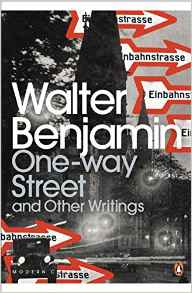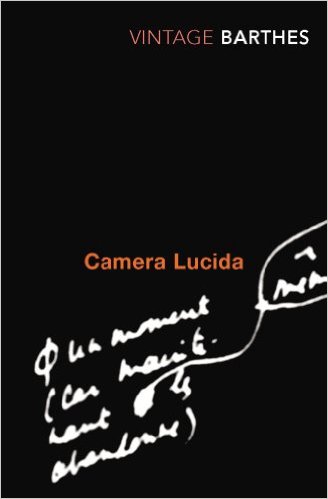For this exercise I chose the poem ‘Not Waving But Drowning’ by Stevie Smith, 1902 – 1971.
I first read this poem over 20 years ago and re-discovered it when searching for a suitable poem for this exercise amongst the books on my book-shelves. This particular poem was published in, The New Oxford Book of English Verse, Chosen and edited by Helen Gardener, Oxford University Press.
Not Waving But Drowning, immediately resonated with me as my wife is going through a very difficult time with her family. However, I will not attempt to produce images that make reference to my personnel issues in this exercise; but I will explore other ideas to complement this poem.
I have discovered an interesting short recital by Stevie Smith of this poem on YouTube. https://www.youtube.com/watch?v=FKHWEWOrL9s
My idea is to take this poem and turn it in to a narrative of my own.
I began by writing down key words and phrases and then looking for ideas.
I also typed and printed the poem which I analysed and looked at each line and each paragraph

The first paragraph of this poem for my story is a man who is drowning but is not aware of his peril. Nobody heard him, because perhaps, he didn’t know how much danger he was in. However, his friends and family may have been able to see the danger; but dismissed it, thinking that he could cope.
For the second paragraph I interpret that our hero has now met his fate and his friends and family are making excuses for themselves.
In the final paragraph our hero has now drowned and is protesting against the excuses and as he now realizes – all too late, just how much danger he really had been in.
As I have thought this through, I was originally thinking of producing as many as 7 or 8 images. But then having discussed my ideas with my wife, she reminded me that I am searching for metaphors to convey my feelings. After a nights sleep I returned to my notes, re-read the exercises criteria and focussed on, “develop metaphorical and visceral interpretations rather than obvious and literal ones.” “Don’t attempt to describe the poem but instead give a sense of the feeling of the poem and the essence it exudes.” Re-reading these lines and referring back to my notes, I realized that I only needed three images in total – One for each paragraph: An image to represent his drowning in his own folly and an image to represent his friends discussing his fate; and a final image representing his loss.
I decided that before I could go any further with this exercise, I had to do some more reading to research ideas. I first turned to a book that I read when preparing for my last assignment with Art of Photography course, Illustration and Narrative, The Fundamentals of Creative Photography by David Prakel and published by AVA. I re-read the chapter on Communication which briefly covers semiotics. I then read Photography by Stephen Bull, published by Routledge. Chapters 3 and 4 helped me formulate my final ideas for this exercise. Chapter 3 provided me with a better insight in to the theory of semiotics; but it was chapter 4 on advertising that the proverbial penny dropped and I saw my solution in how to use semiotics for this exercise. The answer was the theory of relay and example mentioned in this book (page 68) a bank using images of conveying a feelings of joy with the caption, “This is what saving feels like.” This one passage provided me with the answer to my problem of finding the idea of simple images that can work in relay to my poem. The first two images will be relay and my last image will be both indexical and relay.
I then went back to my notes and the ideas began to form. The first image that began to materialise was the middle image and I thought of a wake. I wanted a fairly simple representation and all the wakes I have ever been to include a fair amount of booze; so I thought of just a picture of a mix of half filled glasses on a bar to represent the mourners.

I originally had an idea for my drowned victim having been overwhelmed by debt and thought an image representing brochures, catalogues, and unpaid bills pilled up high might make a good representation and so I sketched it as in idea; but on reflection I didn’t feel it was strong enough. Then I had the idea that drowning could be a metaphor for being overwhelmed by success or the pressure to succeed and drugs are becoming more and more common in the professional high flyer corporate world, with the use of cocaine becoming very common. I then sketched out some ideas and also looked on the web for images of drug use in order to provide a realistic looking image. My final image came to me when I was sketching the drug ideas, I thought of a body in a morgue and I found an image on line of naked feet with a label attached to one of the toes. This I could re-produce easily myself. Not my idea, but I doubt there is such a thing as an original idea anymore anyway.
I decided that with the resulting images, I would turn then from colour to black and white as I feel that black and white conveys more atmosphere / sense of feeling and emotion that colour does not and was best suited for this poem.

This is the first image I made. I used a silver and crystal cocktail tray, icing sugar, a razor blade, a rolled up old Turkish note and my mobile phone with a suitably chosen image downloaded from the internet. I first tried using strobe lighting but couldn’t get a good image due to the reflection; so I used natural light and two reflectors to direct the family-of-angels for the reflected light off the star etched in to the crystal tray. I used black felt material under the tray to get the jet black background. Camera was on a tripod, 105mm, f/2.8, prime-lens, 1sec, f/11, ISO-125, manual focus. Adjustments made in Lightroom and converted to grey-scale in Photoshop.

This is in fact a self-portrait, using a white mattress cover and sheet on my bed, I set my camera on a tripod, set to self-timer, 20 seconds, manual focused using edge of the bed as a focus point. Marked mattress cover with Cello-tape to indicate the boundaries for my feet. I used my Sekonic light-meter to get an incidence reading for a correct exposure, with my feet pointing towards the window; so using just natural light to keep it simple. 24-120mm f/4 zoom, @ 70mm, 1/125, f/4.5, ISO-320, manual focus. Adjustments made in Lightroom with grey-scale conversion made in Photoshop.

I had an arm-band from previous funerals that I draped over a picture, re-introduced the mobile-phone with the same image and added the drinks glasses and bottles to suggest the people chatting about the dead-man. Again I kept it simple by using only natural light. The camera was mounted on a tripod, 105mm f2.8 prime-lens, 1/5sec, f/5, ISO-320, manual focused. Adjustments made in Lightroom and converted to grey-scale using Photoshop.
My original idea was to start with the image of the drugs, then the image of the drinks and finally the image of the feet; but when I uploaded the images and reviewed it I felt that it worked better by starting from the point of view that he is already dead with the explanation of his death being the last picture.
























